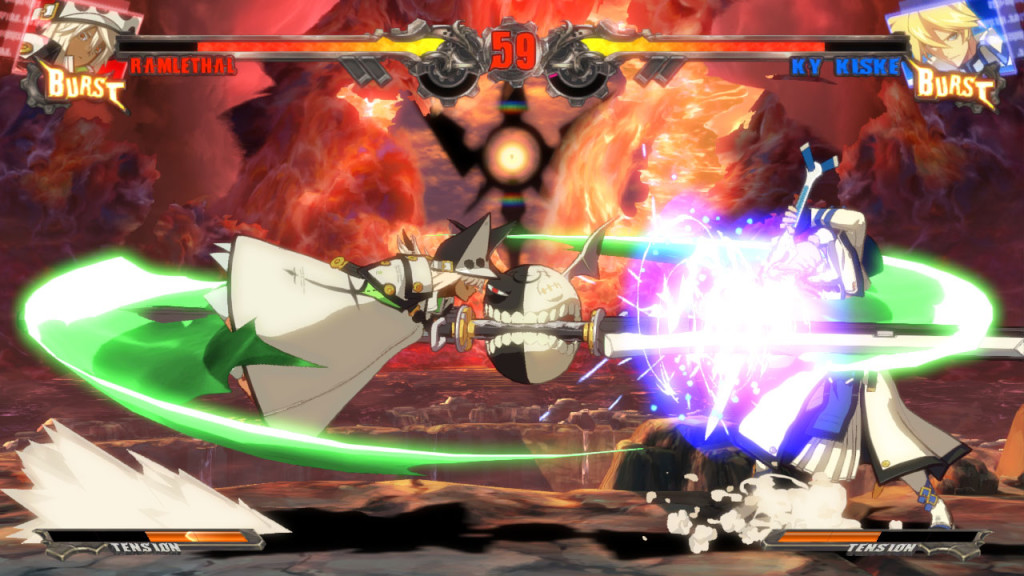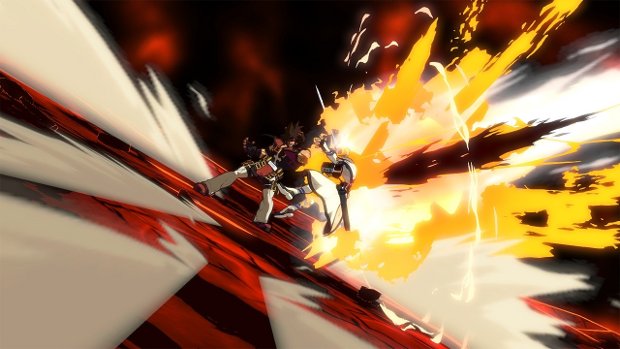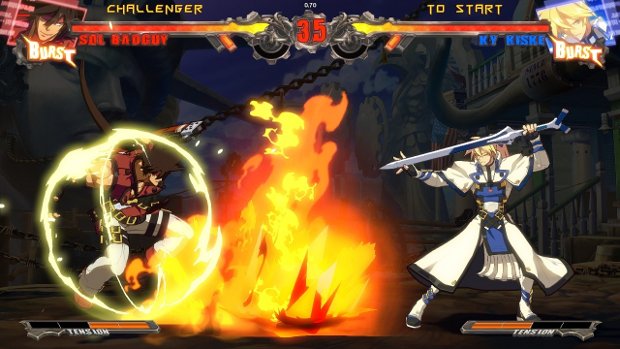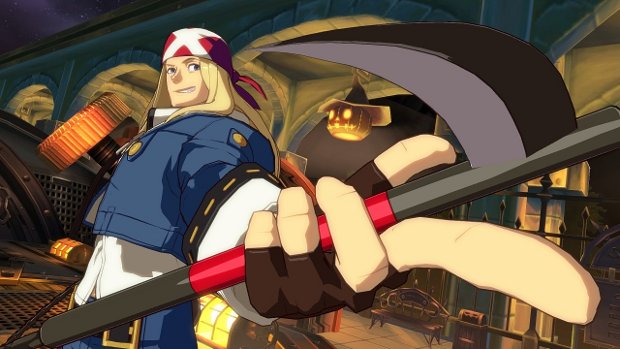
Guilty Gear has been one of the premier franchises for developer Arc System Works. Past entries have delivered on being incredibly flashy, having top-notch sprite work and providing players with an awesome heavy metal soundtrack to keep in theme with the setting they deliver. However, it’s been some time since the main one-on-one fighter series has received any sort of proper entry (Accent Core Plus, released in 2012, was the fifth update of 2002’s Guilty Gear X2). While the updates have held us over for sometime, Guilty Gear Xrd –Sign– finally an appearance on consoles, serving as the first huge overhaul the series has seen and introducing the Unreal Engine to its gameplay. Were the overhauled mechanics worth the wait?
Much like the BlazBlue series, Guilty Gear has always been known for its unique characters. Each feels different, and all possess a distinct learning curve that encourages you to learn the ins and outs of a character. For those familiar with the series, each character feels exactly like they did in previous entries, but with a couple of new tricks.
Unfortunately, Guilty Gear hasn’t always been the easiest fighter to get into, but thanks to modern advances in fighting games, Xrd manages to provide some of the most in-depth modes to teach newcomers the intricacies of their game, as well as lay down fundamentals such as zoning, mix-ups and hit confirms. These can be used for other fighters through their Mission Mode, which provides tutorials on how to use and fight against the entire cast. For those looking to learn combo strings and learn the move sets of old and new characters, the now-standard Challenge Mode makes an appearance, giving players both practical and situational combos to use in battle.

PS3 or PS4?
Though there aren’t huge differences between platforms, the PS4 can process everything the game throws at it. The PS3 version can’t, so players have the option of choosing whether to prioritize performance or visuals. Oddly, the PS4 lacks the PS3’s pre-determined HUD adjustment options, so players have to manually adjust the displays to a level acceptable to them.
One distinct feature of Xrd is that the game is no longer sprite-based (and technically hasn’t been since the 2007 release of Guilty Gear 2: Overture). The game now features cel-shaded 3D character models, replicating the old sprite look but bringing the series into a new era of high-quality aesthetics. The move, ultimately, was a good one, since every little detail was considered with each character. From the way Sol breathes in his idle animation to Ky’s hair falling out of the ponytail after some damage, every detail mattered, and because of that, the game maintains the high quality standard for which Arc System Works is known.
Music has also been a huge part of what made the Guilty Gear series stand out, and the Xrd soundtrack doesn’t disappoint, delivering the heavy metal we’ve come to associate with the series. For fans of the older games’ music, a handful of tracks from X2 and GG2 are available for purchase with in-game currency inside the game’s gallery.

Story Mode plays out a little differently. Unlike BlazBlue or Persona 4 Arena’s stories, it’s essentially a movie for players to watch. There are no battles in which to partake, and there’s one linear story loaded with plot and action sequences. It will roughly take about four to five hours to watch in its entirety, but rewards you for watching the entire thing by speeding up the process of buying the game’s only unlockable character (the other two can only be purchased on the PlayStation Store). It’s also recommended that you play Arcade Mode before dipping into the story, since the plot picks up immediately after the events of the arcade progression. Get some popcorn ready, folks; you’re in for a long ride.
Multiplayer is exactly as you would expect for a fighting game: a standard versus mode against either computers or local players, and a straightforward online mode. Disappointingly, the issues I mentioned in my Accent Core Plus review still linger. The addition of cross-play between the PS3 and PS4 version might contribute to the inability to find matches quickly, but the game’s odd lobby system might not help much in that regard either. However, when you do find a match, the netcode doesn’t seem as solid as BlazBlue’s. Due to Guilty Gear’s focus on fast-paced gameplay, any sort of lag or latency issues can immediately sour a match.

Xrd is something Guilty Gear needed: a modern refresh that breathes life into a series that has long been overshadowed by other Arc System Works games. It manages to keep the momentum going for the fast-paced, high-energy gameplay we’ve known to love from this series. Veterans and novices alike can enjoy this entry, due to the deep process of developing your skill and a deep story that still has yet to see its ending. Any lover of fighting games should not miss out.
Pros: Colorful cast of characters, amazing soundtrack, high-quality aesthetics
Cons: Online Mode is still a mess



















